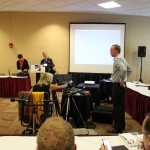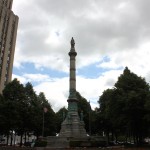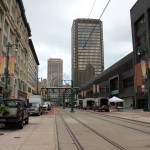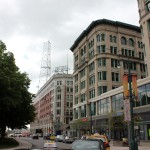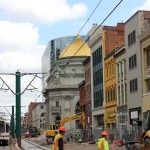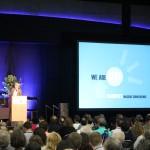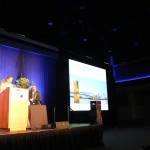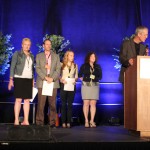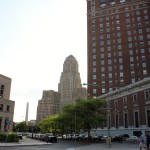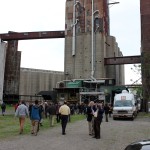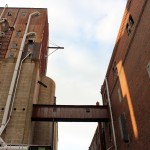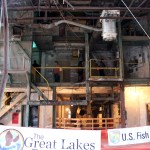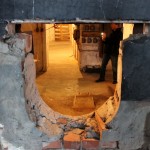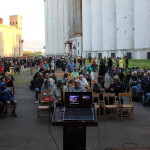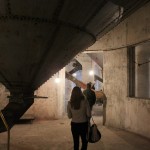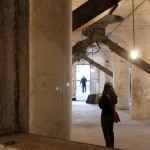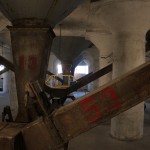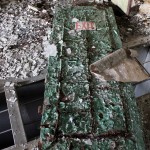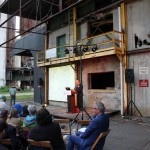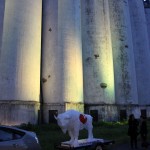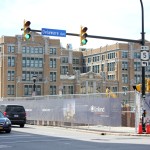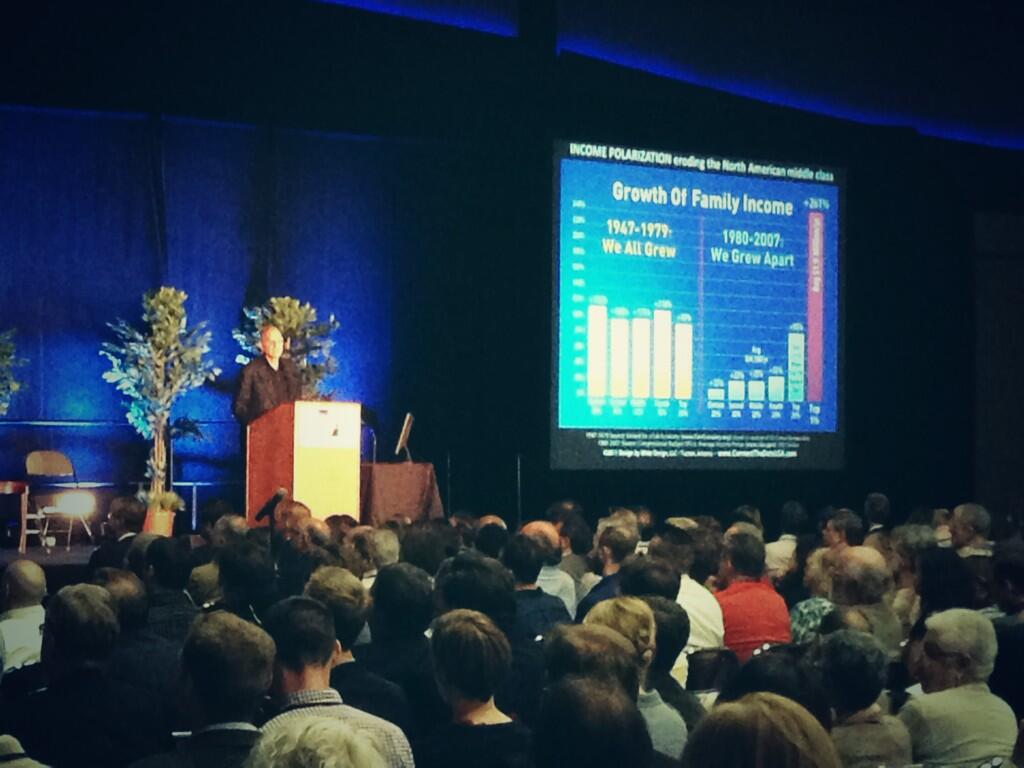The journey to Buffalo was filled with smoke and flames. As the towering inferno that was our Megabus burned away into chard wreckage along the Interstate highway, I looked on as firefighters doused the flames. The highway was closed, but we were whole. No deaths or injuries. Not a single piece of luggage singed. We rode school buses to a nearby town, Fredonia, and hopped on a local bus line that stopped at many small New York towns.
At last in the distance, bending around Lake Erie, I could see the silhouette of a skyline next to rows of turning wind turbines. I struggled with my iPhone, trying to catch up on the CNU preview episodes of the StrongTowns podcast. This being my first Congress, I had no idea what to expect.
The bus arrived, we checked into our hotel, went to get our badges. The whole day had been wild. Was the bus fire even real? We sat in on a session about urban retail where we found Cincinnatian Kathleen Norris of Urban Fast Forward. It was great to see a familiar face.
Ken Greenberg’s opening plenary was fantastic. He was able to highlight the challenges of urbanity in a way that made sense to everyone. And after the session we were able to speak with the new Chair of the CNU Board, Doug Farr. We met people and new friends, most of them Canadian.
We arrived at the Hotel Lafayette just in time to snap a group photo with the CNU NextGen pub crawlers. That night I had already met so many people and discussed with so many people urbanism and Cincinnati.
The next few days I attended sessions; many of which were informative, but it was a very different experience than a typical conference. There were so many conversations, ideas and new people.
We hung out in an old grain silo. Silo City as Buffalo natives called it. It was like old school Grammar’s (circa 2009) on a massive scale. A news reporter approached us for an interview. I bravely stepped forward. It was on everyone’s mind, what could we say about Buffalo?
Buffalo is a rust belt city, more the style of Detroit or Cleveland than Cincinnati. Its downtown still quieted by the abandonment and neglect. Its old factories still silent. I have no compass to gauge its trajectory or past mistakes, although signs of that are visible. Cincinnati’s downtown has it good compared to Buffalo, at least from what I had seen.
The CNU NextGen peeps were playing bocce ball on a parklet outside the hotel. Inside the hotel, attendees were spouting ideas; debates and even a late night show happened. At one point we may have even crashed a private party hosted by James Howard Kuntsler.
I met a native who was volunteering at the Congress and we engaged in a lengthy discussion. He was a software developer who had moved to San Francisco, then back to Buffalo, then to New York City, and eventually back to Buffalo. He said he always had an interest in growing his home town and that now, he felt, was the right time to start setting down roots.
Before I left I also had the opportunity to visit Allentown where I dined at the Anchor and had some trademark buffalo wings. During our stay, I also had dinner at a spiffy Italian restaurant a few blocks away. I didn’t stay very long at the final party at Larkin Square. Our bus back to Cincinnati was calling. Fortunately this time it did not catch on fire.
Randy asked me to write about my takeaways from the Congress. I attended some great sessions, and I met a lot of people – many of whom are heroes in the small world engaged in urbanism – but I think my greatest takeaway is this:
We are not alone. There is a whole network of people who have the talent, the ideas and the drive who are making this change on a national scale. These people may not always agree, but from what I heard, they are all on the same page about Cincinnati. They’re encouraged and they’re all rooting for us.

